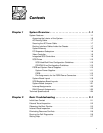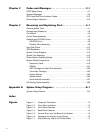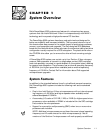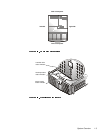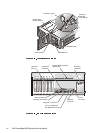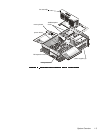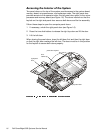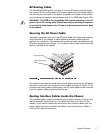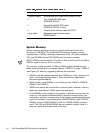
System Overview 1-1
&+$37(5
6\VWHP2YHUYLHZ
Dell
®
PowerEdge
®
6350 systems are feature-rich, enterprise-class server
systems that use Intel
®
Pentium
®
II Xeon
™
microprocessor(s) with MMX
™
technology and incorporate a high-performance PCI local bus.
The PowerEdge 6350 systems have been rack-optimized and designed for
better serviceability and increased reliability. The two panel doors on top of
the chassis allow easy access to the system board for performing processor,
memory, and expansion-card upgrades. The Dell-designed SCSI backplane
board and the hard-disk drive carriers eliminate the extensive cabling and drive
configuration usually required for a SCSI subsystem. The plastic drive rails on
the CD-ROM drive allow you to remove the drive without removing a single
screw.
A PowerEdge 6350 system can contain up to four Pentium II Xeon micropro-
cessors. Each processor is housed in a single-edge contact (SEC) cartridge/
heat sink assembly mounted in a guide bracket on the system board, allowing
for greater heat dissipation. The processor has an internal operating frequency
of 400 MHz (or a higher speed when available) and an external operating
frequency of 100 MHz. Contact Dell for information about Dell-supported
microprocessor upgrades.
6\VWHP)HDWXUHV
In addition to the standard features found in a traditional personal computer,
Dell PowerEdge 6350 systems include the following new and/or advanced
features:
One to four Intel Pentium II Xeon microprocessors with an internal operat-
ing frequency of 400 MHz (and higher speeds when available) and an
external bus speed of 100 MHz.
A secondary (L2) cache of 512 KB, 1 MB, or 2 MB (for higher-speed micro-
processors, when available) of SRAM is included within the SEC cartridge
that contains the microprocessor.
Support for symmetric multiprocessing (SMP) when two or more micro-
processors are installed.
NOTE: Additional microprocessors must have the same internal operating
frequency and L2 cache size as the initial microprocessor(s). Not all
versions of the Pentium II microprocessor will work properly as additional





